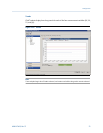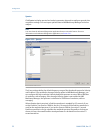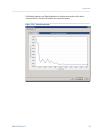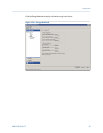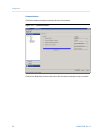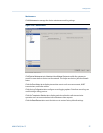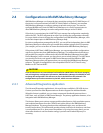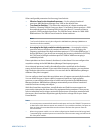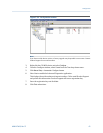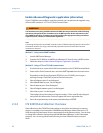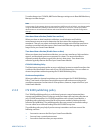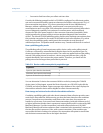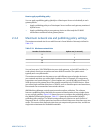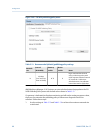
Other configurable parameters for the energy band include:
• Effective Fmax for the thumbnail spectrum — For the velocity thumbnail
spectrum, AMS Machinery Manager uses 100% as the default Fmax.
• True Fmax for PeakVue — This allows the monitoring of a slower machine with
PeakVue. Choosing 1000 Hz Fmax uses about 1.6 seconds of data to produce a 1000
Hz analytical spectrum. Choosing 500 Hz Fmax uses about 3.2 seconds of data to
produce a 500 Hz analytical spectrum. The 1000 Hz Fmax is better for 1800–3600
RPM machines. The 500 Hz Fmax is better for slower machines.
Note
True Fmax for PeakVue can only be configured in AMS Machinery Manager (MHM Access
Control must first be enabled).
• Averaging for the high-resolution velocity spectrum — Averaging the velocity
spectrum reduces the effect of transients in the data. If you use averaging, the
frequency resolution of the high-resolution spectrum is 1.25 Hz/bin (800 lines) or 3
Hz/bin (400 lines). If you do not use averaging, the frequency resolution is 0.625 Hz/
bin. The Fmax for all high-resolution spectra is 1000 Hz. 400-line averaging is
enabled by default.
Data acquisitions can be on-demand, alert-based, or time-based. You can configure data
acquisition settings in the AMS Machinery Manager Data Import program.
An on-demand spectrum (usually a thumbnail) provides a quick look at the vibration
energy in the frequency domain. If you need more frequency resolution, you can obtain a
high-resolution spectrum or a waveform. You can store data in AMS Machinery Manager
database if the point is mapped.
You can configure time-based data acquisitions once; it happens automatically thereafter.
You can define the type of data to collect (compressed spectrum, high-resolution
spectrum, or waveform) and how often to collect and store data in the AMS Machinery
Manager database. AMS Machinery Manager automatically stores all time-based data
retrieved for future viewing and analysis.
With Alert-based data acquisitions, overall vibration and PeakVue measurements are
processed to determine the alert state of the equipment being monitored. Then you can
select at what alert level to trigger retrieval of the spectrum or waveform associated with
that sensor. Alert-based data acquisition typically results in a longer life for your Smart
Power Module.
Notes
• It is not necessary to transmit both waveform and spectrum from the CSI 9420. The spectrum
is about half as much data to transmit as a waveform. If you need the waveform, the spectrum
does not have to be transmitted because the software calculates the spectrum from the
stored waveform.
• When using a power module, use care when configuring time-based retrieval of energy band.
Transmitting high-resolution spectrum or waveforms consumes more energy and reduces the
life of the power module.
Configuration
MHM-97408, Rev 15 59



